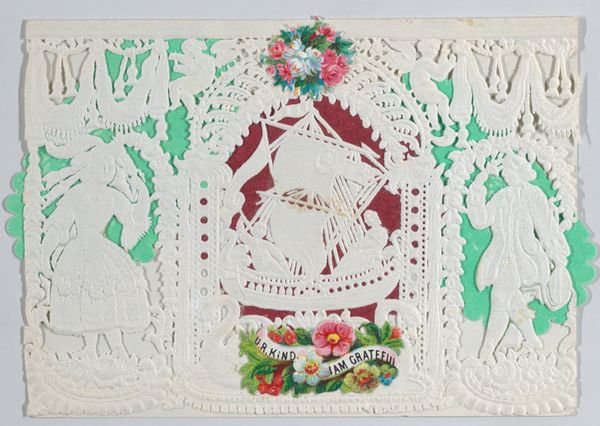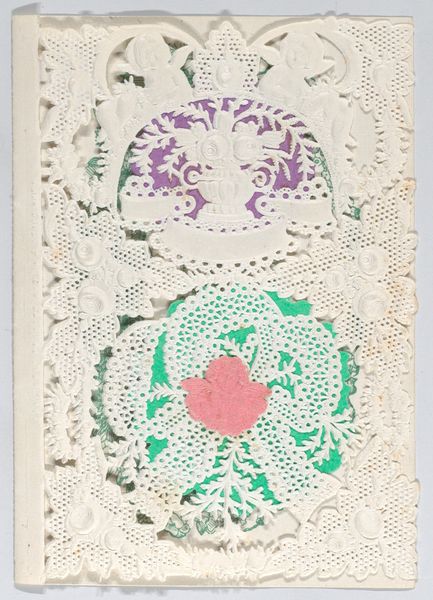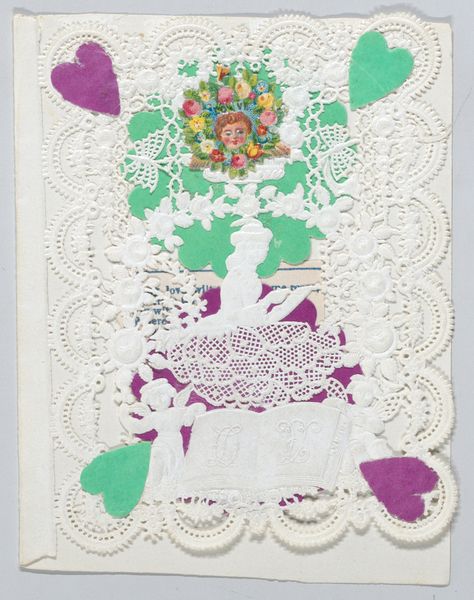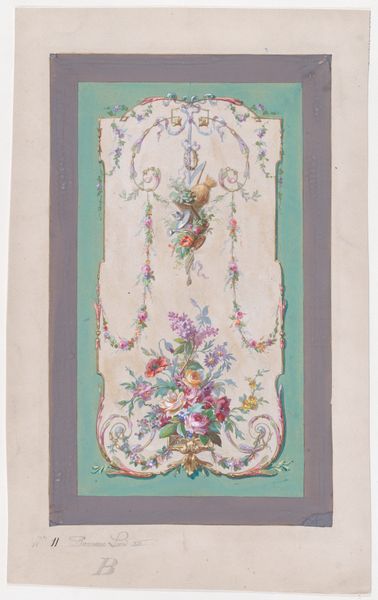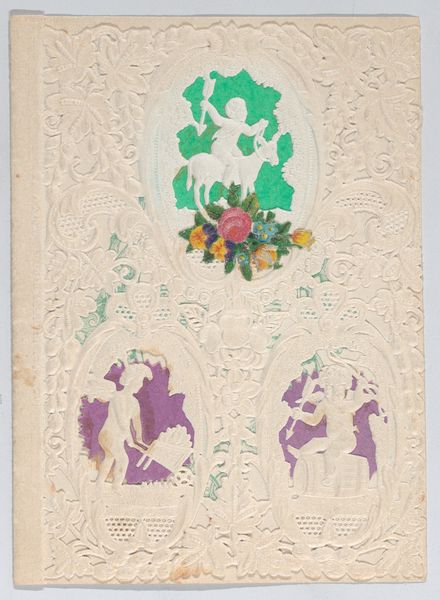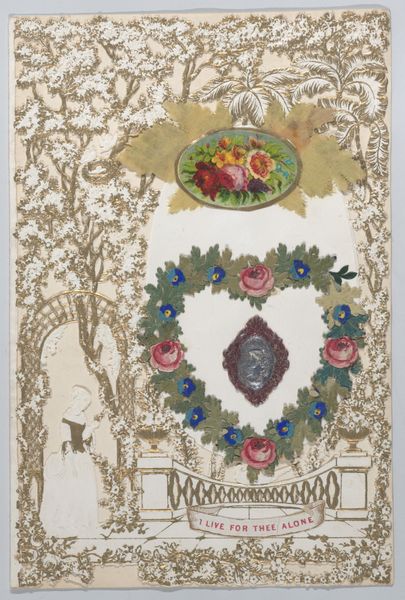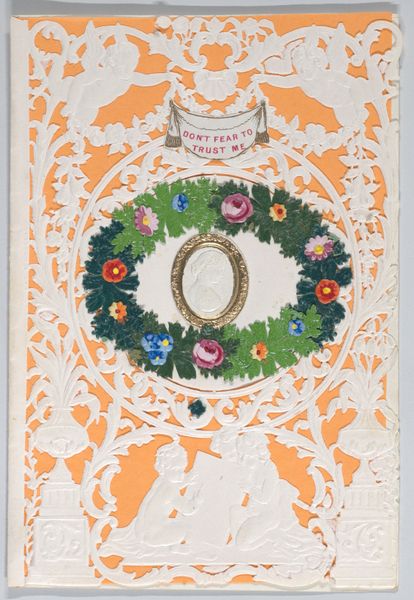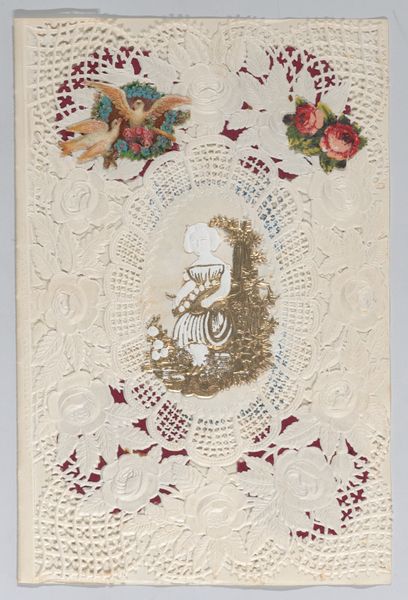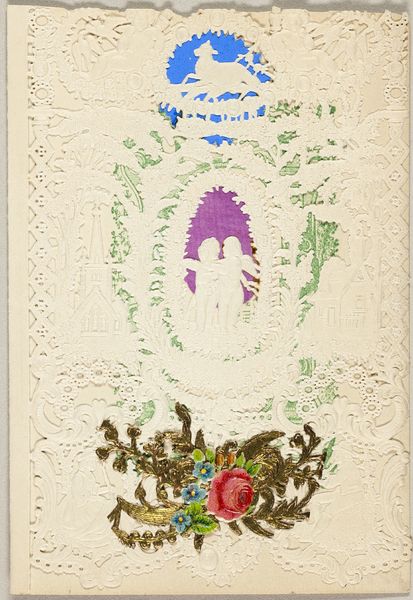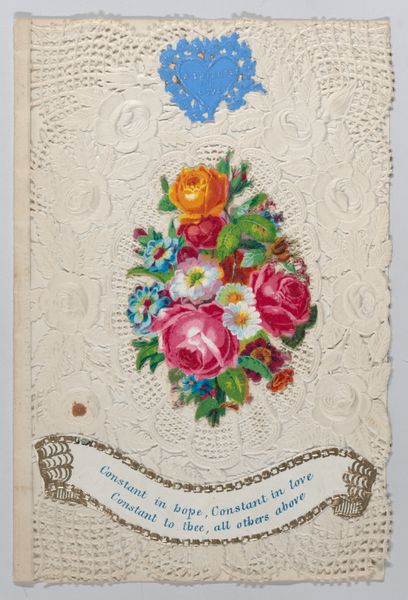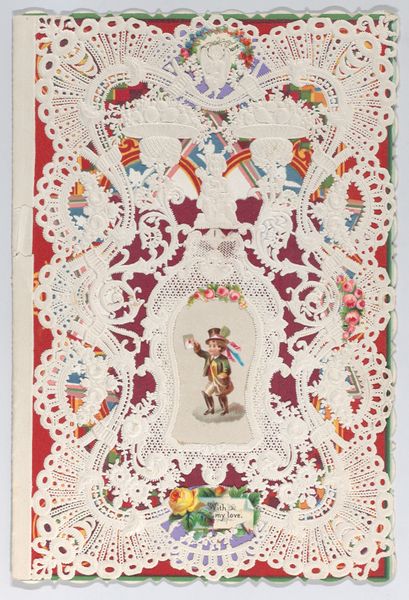
drawing, print
#
drawing
#
natural stone pattern
#
decorative element
#
egg art
# print
#
decorative
#
collage layering style
#
handmade artwork painting
#
watercolour bleed
#
watercolour illustration
#
layered pattern
#
decorative art
Dimensions: Width: 2 3/4 in. (7 cm) Length: 3 3/4 in. (9.5 cm)
Copyright: Public Domain
Curator: What a delicate piece. I must say my initial impression is of intricate layering and a general pastel dreaminess. Editor: Indeed. We’re looking at a handmade valentine, created sometime between 1850 and 1870, so roughly mid-Victorian. It’s currently housed at the Metropolitan Museum of Art. Curator: The eye is drawn to the lacy filigree, that's meticulously crafted. Note how the anonymous creator masterfully juxtaposes the solid areas of lilac with the intricate white paper cut-outs and small areas of watercolor. There’s a clear compositional structure built upon radial symmetry. Editor: It reflects a societal emphasis on sentimental gifting during the period. Consider how such items functioned as symbols of courtship, friendship, and familial affection, objects which gained heightened emotional resonance. It’s also telling, isn't it, how often these types of artifact get archived? Curator: Absolutely, the choice of color palette too, feels quite purposeful. The soft purples and pinks suggest tenderness, while the bright flowers add little spots of joyful visual contrast. Each flower and little cupid seems painstakingly arranged to create balanced rhythm to the aesthetic. Editor: You know, mass production really drove these aesthetics, not to undercut the skill required for design, but Valentine’s Day was becoming industrialized. Advances in printing technologies also meant a rise of more affordable, decorative materials. The availability altered consumption patterns; there's a broader discussion about class too. Curator: That adds a lot to what it all "means", definitely. For me, though, the enduring visual strength rests in its meticulous balance and use of repetition of shapes. The collage construction allows your eye to jump all around this paper world. Editor: Certainly, from a historical perspective, it allows us to reconsider the material culture of 19th-century relationships and industrialization. It allows for us to investigate individual acts and broader market patterns. Curator: Thank you for highlighting these rich contexts; I will leave appreciating the social layers of intention infused into this piece all the more! Editor: It's interesting to have our discussions as well. Thank you for sharing some close looking as well!
Comments
No comments
Be the first to comment and join the conversation on the ultimate creative platform.

